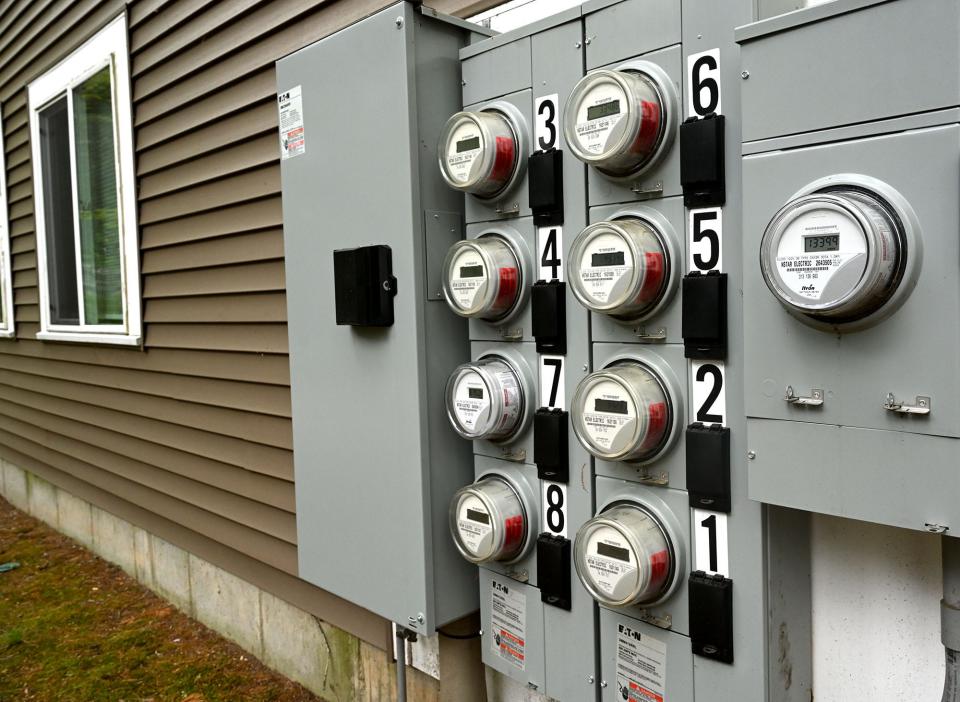Pay what you can? Proposal could help low-income Rhode Islanders with gas, electric bills
PROVIDENCE – There was a time when Rhode Island helped low-income residents keep their lights and heat on by letting them pay their utility bills based on what they could afford.
But despite wide support, only a few years after a Percentage of Income Payment Plan was piloted in Warwick in 1986, funding dried up and the innovative program came to an end.
Since then, other states have adopted PIPPs to help disadvantaged customers avoid shutoffs, but a number of attempts to bring back the program in Rhode Island have failed in the General Assembly.
This year, however, could be different. While National Grid, the former parent company of Narragansett Electric, did not support the program, PPL Corporation – the Pennsylvania company that bought the state’s main natural gas and electric utility last year – is open to the idea. The company already has a PIPP in Pennsylvania.
In a letter to the House Committee on Corporations, Rhode Island Energy, the new name of the Ocean State utility, says it “stands ready to work with this committee, bill sponsors, utility regulators and valued stakeholders in constructing a viable path forward for PIPP.”
More on electricity rates: Electric rates will fall in April, but next winter they may hit a record high again

What would the program do?
The company filed the written testimony in advance of a hearing early last week on a bill introduced by Rep. Scott Slater to resuscitate the program in Rhode Island.
“In order to have a fairer utility-rate structure, those with the lowest incomes should not have to pay the highest percentage of their incomes for utility bills,” the Providence Democrat said at the hearing on Tuesday.
Under his proposal, qualifying customers would pay no more than 3% of their income on their electric bills and 3% on their gas bills. If they use electricity for heating too, then the cap would be 6% of their electric bills.
Discounted pricing would be available to residential customers whose household income is at or below 150% of the federal poverty level and who are eligible to receive help through the federal Low-Income Home Energy Assistance Program or are enrolled in Medicaid. Rhode Island Energy currently has about 61,000 low-income customers, but not all would qualify for a PIPP, said Nick Ucci, a lobbyist for Rhode Island Energy.
The program would be paid for by all other utility customers through a LIHEAP surcharge that’s already on their bills. State law caps that surcharge at no more than $10 a year for electric customers and $10 a year for gas customers.
Will RI wean off natural gas? With the future of natural gas in RI on the line, what to do with the aging infrastructure?
Why restart PIPP now?
Efforts to restart PIPP go back at least to 2004. Slater, who was first elected to the House in 2009, estimates he’s filed PIPP legislation as many as 10 times previously. His latest effort comes at a time when electric rates have hit record highs because of increased global demand for natural gas.
One concern about the program has been its cost. But advocates say that utility shutoffs cost the government in other ways by forcing people into hospitals, nursing homes or foster care. High energy bills also contribute to the state’s housing crisis if people have to choose between paying the utility or their landlord, they say.
“Through this legislation, we have a chance to challenge the utility termination crisis for low-income households that has plagued our state for too long,” wrote Camilo Viveiros, executive director of the George Wiley Center, a Pawtucket organization that advocates on behalf of marginalized Rhode Islanders and has been the leading voice on PIPP in the state.
More: Get a notice about a community electric program in the mail? Here's what to know about it.
While the state Department of Human Services called the program “commendable,” it raised concerns about increasing costs for other ratepayers and, under the current funding proposal, taking money away from LIHEAP, which provides grants to help pay energy bills.
The Public Utilities Commission said administrative costs could be kept down by combining the program with other existing low-income initiatives.
At the hearing, Rep. Brian Newberry, a North Smithfield Republican, while not voicing opposition to the program, asked whether it could act as a disincentive to participating customers to conserve energy. Slater said that usage could be monitored. The bill also calls for offering energy efficiency improvements to households enrolled in the program.
Solar farms are destroying forests: Can RI meet clean energy goals and still protect land?
Slater’s proposal is modeled on the program in New Hampshire, which has tiered rates for low-income customers. Illinois, California, New Jersey, Maine and Ohio also have PIPPs. In Pennsylvania, PPL’s program combines discounted pricing with a debt-forgiveness component.
The program can make a real difference. A study of the Warwick pilot found that it reduced utility bills for some residents from nearly half their income to a more affordable 8%, according to the George Wiley Center.
“I think this is a very moderate first step that we can take,” said Rep. Brandon Potter, a Cranston Democrat. “I hope that we move this bill this year.”
This article originally appeared on The Providence Journal: Rhode Island Energy-backed bill would cut some electricity bills

